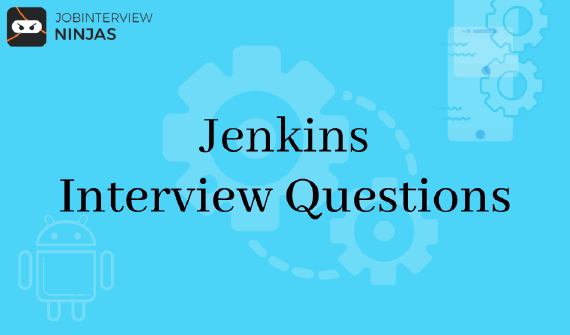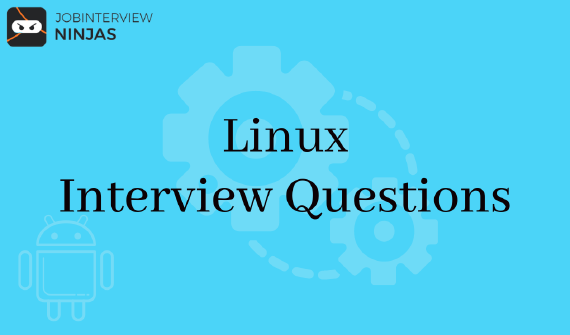
Top 40 Jenkins Interview Questions And Answers For Freshers/Experienced
If you are looking for a career in software development, then Jenkins is definitely worth exploring. This widely used …

Spring is one of the important topics to be asked in the technical job interview of Software engineers, developers, etc. posts. Candidates can prepare their Spring Interview Questions from this page. Here we have given 50 Spring Interview Questions and Answers which can be asked in the job interview. Read on to know more about Spring topics and coding from the below section.
About Spring: The spring s an open-source powerful java framework that is used for developing a web application and control container for the Java platform. Any Java application can use the spring for development, but there is an extension for developing web applications on top of the Java EE platform.
1. What do you understand by Spring Framework?
2. Tell some advantages of the spring framework?
3. Tell the modules of the spring framework?
4. What is the IOC container responsible for in spring?
5. Name the types of IOC containers in spring?
6. Explain the Spring configuration file?
8. Explain some features of Spring Framework?
9. Explain the IoC (Inversion of Control) Container?
10. Explain Dependency Injection?
11. Differentiate constructor and setter injection?
13. Explain the bean scopes available in spring?
15. Tell the way to disable specific auto-configuration classes?
16. Are we able to disable the default web server in the Spring Boot application?
17. Differentiate between BeanFactory and ApplicationContext?
18. When will you use singleton and prototype scope?
19. Explain the transaction management supports by spring?
20. Name the classes for spring JDBC API?
21. Tell the ways to fetch records by spring JdbcTemplate?
22. Tell the use of NamedParameterJdbcTemplate?
23. Tell the advantage of SimpleJdbcTemplate?
25. Tell some advantages of spring AOP?
27. Name the types of advice in AOP?
28. Name three AOP implementations?
29. Tell some limitations of autowiring?
30. How to exclude any package by not using the basePackages filter?
31. What are the advantages of JdbcTemplate in spring?
32. How to get ServletConfig and ServletContext objects in spring bean?
33. Does all JoinPoints are supported by the spring framework?
34. Tell us how the root application context in Spring MVC loaded?
35. Is singleton bean really thread-safe?
36. What are the ways to thread-safety in beans?
37. Explain the significance of @Repository annotation?
38. Explain the importance of @Required annotation?
39. Explain the importance of session scope?
40. Explain the role of @ModelAttribute annotation?
41. Tell the importance of the web.xml in Spring MVC?
42. Explain the Model in Spring MVC?
43. Explain the usage of @Controller annotation?
45. Explain the Spring MVC framework?
46. Name the front controller class of Spring MVC?
47. Explain @Controller annotation?
48. Explain the ViewResolver class?
49. Name the ViewResolver class that is widely used?
1. What do you understand by Spring Framework?
2. Tell some advantages of the spring framework?
3. Tell the modules of the spring framework?
4. What is the IOC container responsible for in spring?
5. Name the types of IOC containers in spring?
6. Explain the Spring configuration file?
8. Explain some features of Spring Framework?
9. Explain the IoC (Inversion of Control) Container?
10. Explain Dependency Injection?
11. Differentiate constructor and setter injection?
13. Explain the bean scopes available in spring?
Note: The last three-bean scopes are only available when the users use web-aware ApplicationContext containers.
15. Tell the way to disable specific auto-configuration classes?
By using the exclude attribute of @EnableAutoConfiguration as shown below:
@EnableAutoConfiguration(exclude = {InterviewBitAutoConfiguration.class})
If the class is not mentioned on the classpath, we can state the fully qualified name as the value for the excludeName.
//By using “excludeName”
@EnableAutoConfiguration(excludeName={Foo.class})
You can add into the application.properties and multiple classes can be added by keeping it comma-separated.
16. Are we able to disable the default web server in the Spring Boot application?
17. Differentiate between BeanFactory and ApplicationContext?
18. When will you use singleton and prototype scope?
19. Explain the transaction management supports by spring?
20. Name the classes for spring JDBC API?
Follow Simple Steps to apply in these MNC’s:
21. Tell the ways to fetch records by spring JdbcTemplate?
22. Tell the use of NamedParameterJdbcTemplate?
23. Tell the advantage of SimpleJdbcTemplate?
25. Tell some advantages of spring AOP?
27. Name the types of advice in AOP?
28. Name three AOP implementations?
29. Tell some limitations of autowiring?
30. How to exclude any package by not using the basePackages filter?
By using the exclude attribute in the annotation @SpringBootApplication we can exclude any package:
@SpringBootApplication(exclude= {Student.class})
public class InterviewBitAppConfiguration {}
31. What are the advantages of JdbcTemplate in spring?
32. How to get ServletConfig and ServletContext objects in spring bean?
There are two ways, first is by implementing the spring-aware interfaces or using @Autowired annotation.
@Autowired
private ServletContext servletContext;
@Autowired
private ServletConfig servletConfig;
33. Does all JoinPoints are supported by the spring framework?
34. Tell us how the root application context in Spring MVC loaded?
35. Is singleton bean really thread-safe?
36. What are the ways to thread-safety in beans?
37. Explain the significance of @Repository annotation?
38. Explain the importance of @Required annotation?
@Required annotation is used to represent that the bean property can be populated through autowiring or any explicit value during the bean defining the configuration time. For example, a code snippet where we require to have the values of age and the name:
import org.Springframework.beans.factory.annotation.Required;
public class User {
private int age;
private String name;
@Required
public void setAge(int age) {
this.age = age;
}
public Integer getAge() {
return this.age;
}
@Required
public void setName(String name) {
this.name = name;
}
public String getName() {
return this.name;
}
}
39. Explain the importance of session scope?
Session scopes create bean instances for HTTP sessions. This means that a single bean can be used for the allocation of multiple HTTP requests. A scope attribute or @Scope or @SessionScope annotation is used to define the scope of the bean.
@Component
@Scope(“session”)
public class UserBean {
//some methods and properties
}
@Component
@SessionScope
public class UserBean {
//some methods and properties
}
40. Explain the role of @ModelAttribute annotation?
The @ModelAttribute annotation plays a very vital role in binding method parameters to the particular attribute that responds to a model. The role of the @ModelAttribute annotation is based on what purpose the developer is using it. Generally, it is used at the method level, and then it is responsible for adding attributes to it. When used at a parameter level, it shows that the parameter value is needed to be retrieved from the model layer.
You may also prepare:
41. Tell the importance of the web.xml in Spring MVC?
42. Explain the Model in Spring MVC?
43. Explain the usage of @Controller annotation?
44. How will you create a controller without using the given @Controller or @RestController annotations?
45. Explain the Spring MVC framework?
46. Name the front controller class of Spring MVC?
47. Explain @Controller annotation?
48. Explain the ViewResolver class?
49. Name the ViewResolver class that is widely used?
We hope that these spring interview questions and answers will help you in cracking your job interview. If you have any queries or questions then reach us through the below-given comment box.
Want to prepare for these languages:

If you are looking for a career in software development, then Jenkins is definitely worth exploring. This widely used …

In this post, we will cover a few Linux interview questions and their answers. So, let’s get started. In this …